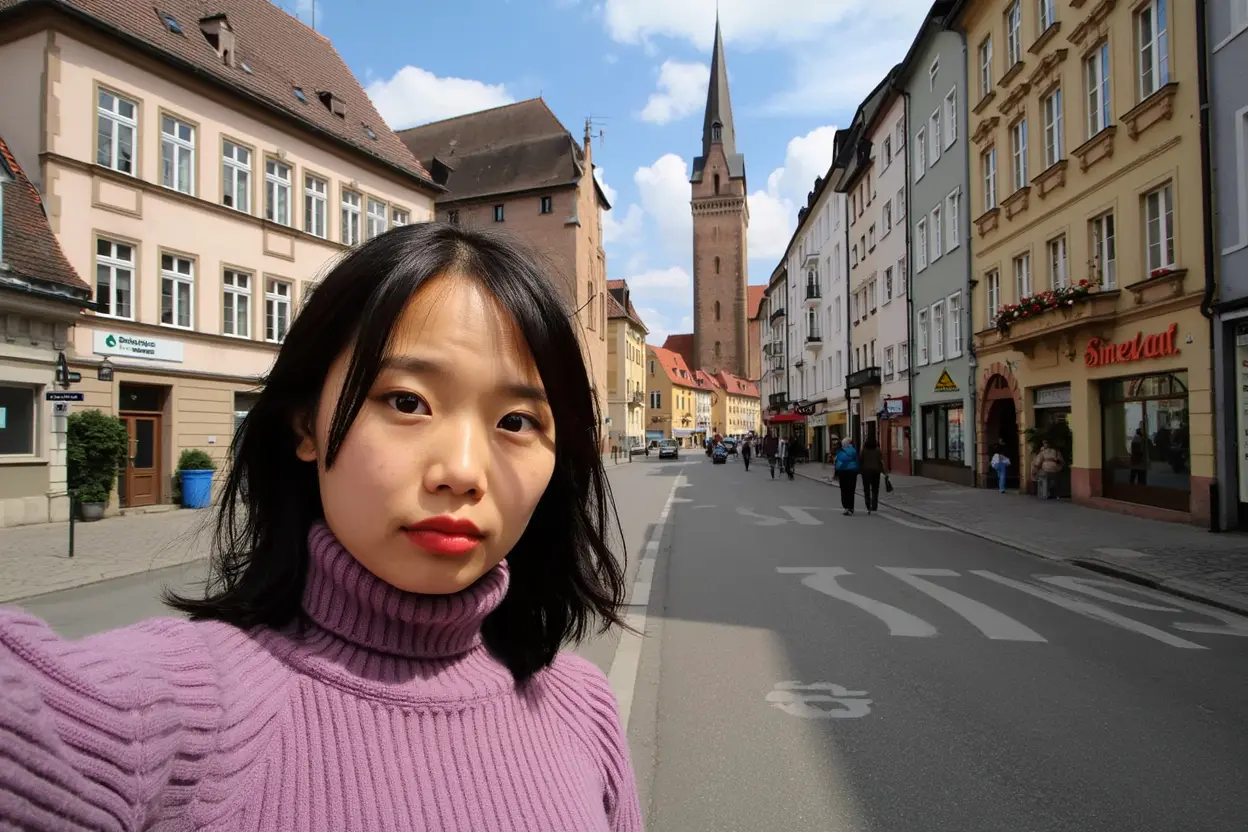The Power of Kontext AI: Revolutionizing Visual Creation with FLUX Technology
The world of AI-powered image generation has evolved rapidly in recent years, with models becoming increasingly sophisticated in their ability to understand and create visual content. Kontext AI, powered by the cutting-edge FLUX.1 models, represents the next frontier in this evolution, offering unprecedented capabilities for both generating and editing images with remarkable precision and creative flexibility.

Who Benefits from Kontext AI's FLUX-Powered Solutions?
Kontext AI's powerful FLUX.1-driven image generation and editing capabilities serve a diverse range of users:
-
Creative Professionals: Designers, illustrators, and artists can leverage Kontext AI's FLUX technology to rapidly prototype concepts, generate reference images, and explore creative directions that might otherwise take hours or days to visualize manually. The platform's ability to understand nuanced artistic direction makes it an invaluable ideation tool that complements traditional creative workflows rather than replacing them.
-
Marketing and Content Teams: For marketing professionals, Kontext AI with FLUX.1 offers a way to quickly produce customized visual content for campaigns, social media, and promotional materials without relying on extensive stock photo libraries or commissioning custom photography for every need. The ability to generate on-brand imagery on demand helps teams maintain visual consistency while meeting tight deadlines.
-
Web and App Developers: Developers can integrate Kontext AI's FLUX models to dynamically generate and modify images based on user preferences or contextual data, creating more personalized and engaging digital experiences. This capability is particularly valuable for e-commerce platforms, content management systems, and interactive applications where visual elements play a crucial role.
-
Small Business Owners: For entrepreneurs and small business owners with limited design resources, Kontext AI powered by FLUX.1 provides access to professional-quality visual content creation without requiring specialized design skills or expensive software. From product photography enhancements to social media graphics, the platform democratizes advanced image creation.
-
Educators and Students: In educational settings, Kontext AI's FLUX technology serves as both a teaching tool and a creative resource, allowing students to visualize concepts, create illustrations for projects, and explore visual storytelling without the barriers of technical artistic skill. Teachers can use the platform to generate custom visual aids that precisely match their curriculum needs.
Challenges and Solutions in AI Image Generation
Kontext AI with FLUX.1 technology addresses several key challenges in the field of AI-powered visual creation:
Common Challenges
-
Prompt Interpretation Accuracy: Many AI image generators struggle to accurately interpret complex or nuanced prompts, resulting in outputs that miss key details or misinterpret user intent. This gap between expectation and result can lead to frustration and time wasted on multiple generation attempts.
-
Limited Editing Capabilities: Traditional AI image generators often treat image creation as a one-shot process, offering limited ability to refine or modify specific aspects of the generated image without starting over completely. This lack of iterative control restricts creative flexibility.
-
Contextual Understanding: Many systems fail to maintain contextual coherence across an image, particularly when dealing with complex scenes involving multiple elements that need to relate to each other in logical ways. This can result in visually interesting but conceptually disjointed outputs.
-
Style Consistency: Maintaining a consistent artistic style throughout an image or across multiple related images can be challenging for many AI systems, particularly when combining multiple concepts or making edits to existing generations.
Kontext AI's FLUX-Powered Solutions
Kontext AI leverages the advanced capabilities of FLUX.1 models to address these challenges:
The FLUX.1 models powering Kontext AI feature enhanced natural language understanding that can parse complex, multi-part prompts with greater accuracy. This sophisticated comprehension allows users to be more specific and nuanced in their requests, resulting in outputs that more closely match their intentions. The FLUX system can understand not just what elements should be included, but how they should relate to each other spatially and conceptually.
Unlike many image generation platforms, Kontext AI with FLUX technology integrates powerful editing capabilities directly into the workflow. Users can generate an initial image and then make targeted modifications through natural language instructions or intuitive visual controls. This approach supports an iterative creative process where images can evolve through refinement rather than requiring complete regeneration for each change.
The FLUX.1 models excel at maintaining contextual coherence across complex scenes. When generating or editing an image, the system considers the entire composition, ensuring that elements relate to each other logically and that changes to one part of an image respect the context established by other elements. This results in more cohesive and believable visual outputs.
Kontext AI's FLUX-powered style preservation technology allows users to establish a particular artistic style and maintain it consistently throughout the editing process or across multiple related images. This capability is particularly valuable for projects requiring visual consistency, such as marketing campaigns, book illustrations, or concept art series.
Use Cases for Kontext AI with FLUX.1 Technology
The versatility of Kontext AI's FLUX models enables a wide range of practical applications:
-
Product Visualization: E-commerce businesses can generate product images in different settings, colors, or configurations without physical photography.
-
Content Creation: Publishers and content creators can produce custom illustrations and visual assets tailored precisely to their articles, posts, or videos.
-
Design Prototyping: Designers can rapidly visualize concepts and iterate through multiple design directions in minutes rather than hours.
-
Photo Enhancement: Users can transform ordinary photographs with FLUX-powered style transfers, background replacements, or object removals that look natural and professional.
-
Conceptual Art: Artists can explore new creative directions by using Kontext AI's FLUX models as a collaborative tool that helps visualize complex concepts or experimental styles.
-
Educational Materials: Teachers can create custom visual aids that perfectly match their lesson content, making abstract concepts more accessible through visual representation.
Key Features of Kontext AI Powered by FLUX.1
Kontext AI offers a comprehensive suite of features powered by the advanced FLUX.1 models:
-
Contextual Text-to-Image Generation: Create detailed, coherent images from text descriptions with remarkable accuracy. The FLUX system understands complex prompts and maintains logical relationships between elements in the generated scene.
-
Natural Language Editing: Modify generated images using simple text instructions like "make the sky more dramatic" or "change the color of the car to blue" without needing to understand complex editing tools.
-
Visual Editing Interface: For those who prefer direct manipulation, Kontext AI with FLUX technology offers intuitive visual controls for making precise adjustments to specific areas of an image.
-
Style Transfer and Preservation: Apply artistic styles to images while maintaining the integrity of the content, or ensure consistency across multiple edits by preserving an established style through FLUX's advanced understanding.
-
Composition Tools: Arrange multiple elements within a scene with natural language instructions, allowing for complex compositions without manual positioning.
-
Resolution Enhancement: Upscale images while adding natural detail using FLUX's intelligent detail generation, resulting in high-resolution outputs suitable for professional applications.
-
Seamless Background Manipulation: Replace or modify image backgrounds while maintaining natural lighting, shadows, and edge integration with foreground subjects.
Frequently Asked Questions about Kontext AI and FLUX Technology
-
How does the FLUX.1 Kontext model differ from other image generation models?
The FLUX.1 Kontext model represents a significant advancement in AI image generation through its enhanced contextual understanding and compositional awareness. While many models can generate visually impressive images, FLUX excels at maintaining logical relationships between elements in a scene and understanding how different parts of an image should interact. This results in more coherent and conceptually sound outputs, particularly for complex prompts. Additionally, FLUX.1 has been specifically optimized for seamless integration between generation and editing tasks, allowing for a more fluid creative workflow than systems that treat these as separate processes.
-
Can Kontext AI's FLUX-generated images be used for commercial projects?
Yes, images generated using Kontext AI's FLUX models can be used for commercial projects under our licensing terms. Images generated using our platform can be used in commercial work including marketing materials, product designs, publications, and more. Different subscription tiers offer varying levels of commercial usage rights, with our Professional plan providing the most comprehensive commercial licensing. We recommend reviewing our specific licensing terms for your subscription level to understand the full scope of permitted commercial applications.
-
How can I get the best results from Kontext AI's FLUX models?
To achieve optimal results with Kontext AI's FLUX technology, focus on providing clear, detailed prompts that specify not just what elements you want in your image, but also the style, mood, lighting, and composition you envision. Using reference terms like "in the style of..." can help guide the aesthetic direction. For editing existing images, be specific about what aspects you want to change while indicating what should remain preserved. Experiment with the various FLUX parameters available, such as guidance strength and detail enhancement, to fine-tune the output. Remember that the process is iterative—don't hesitate to generate multiple versions and refine your prompts based on the results you see.
-
What exactly is FLUX.1 Kontext technology and how does it power Kontext AI?
FLUX.1 Kontext is a revolutionary suite of generative flow matching models developed by Black Forest Labs that enables both image generation and editing with unprecedented context awareness. Unlike traditional text-to-image models, FLUX.1 Kontext performs in-context image generation, accepting both text and images as input. This multimodal approach allows the system to seamlessly extract and modify visual concepts while maintaining remarkable consistency across different scenes and edits.
At its core, FLUX.1 Kontext combines advanced flow models with transformer architecture to achieve superior character consistency (up to 94.7% accuracy), contextual understanding, and local editing capabilities. The technology processes both visual and textual inputs simultaneously through specialized neural networks: a visual encoder for analyzing reference images, a text encoder for processing detailed prompts, and a diffusion-based generator for creating high-quality outputs.
What truly sets FLUX.1 Kontext apart is its contextual memory system that maintains awareness of visual elements throughout multiple editing iterations. This enables Kontext AI to perform complex operations like preserving character identity across different environments, making targeted local edits without affecting the rest of the image, and transforming entire scenes while maintaining subject integrity. Additionally, the FLUX.1 pipeline includes proprietary optimization techniques that deliver results up to 8x faster than comparable models, making creative workflows significantly more efficient.
-
What are the different FLUX.1 Kontext model variants available?
The FLUX.1 Kontext family includes several specialized model variants, each optimized for different use cases:
- FLUX.1 Kontext [pro]: The flagship model that delivers local editing, generative in-context modifications, and classic text-to-image generation with exceptional quality. It handles both text and reference images as inputs, enabling targeted edits in specific image regions and complex transformations of entire scenes. Operating up to 8x faster than previous state-of-the-art models, it's ideal for iterative editing while maintaining character consistency across different scenes.
- FLUX.1 Kontext [max]: An experimental model with improved prompt adherence, typography generation, and high consistency for editing, all without compromising on speed. This variant is designed for professional applications requiring maximum precision.
- FLUX.1 Kontext [dev]: A lightweight 12B diffusion transformer suitable for customization and compatible with previous FLUX.1 [dev] inference code. This open-weight variant is intended for research usage and safety testing.
These models are available through various platforms including the Kontext AI web interface and through infrastructure partners like FAL, Replicate, Runware, DataCrunch, TogetherAI, and ComfyOrg.
-
Is Kontext AI with FLUX technology suitable for non-designers?
Absolutely. Kontext AI with FLUX.1 has been designed with accessibility in mind, making sophisticated image generation and editing capabilities available to users regardless of their design experience. The natural language interface allows anyone who can describe what they want to create compelling visual content without needing to learn complex design software. For those with more experience, the platform also offers advanced controls to fine-tune outputs. This dual approach makes Kontext AI's FLUX technology valuable for both casual users looking to create simple visuals and professionals seeking to streamline their creative workflow.
-
How does Kontext AI's FLUX system handle sensitive or inappropriate content?
Kontext AI incorporates robust content safety measures within its FLUX models to prevent the generation of harmful, offensive, or inappropriate imagery. Our system uses multiple layers of content filtering during both the prompt analysis and image generation stages. These filters are designed to identify and block requests that violate our content policies while still allowing for creative expression within appropriate boundaries. We continuously update and refine these safety mechanisms to reflect evolving standards and address emerging concerns. Users who repeatedly attempt to circumvent these protections may have their access restricted in accordance with our terms of service.
-
What future developments are planned for Kontext AI and FLUX technology?
The Kontext AI roadmap includes several exciting developments that will further enhance the FLUX platform's capabilities. We're working on expanding the range of specialized FLUX.1 models optimized for specific visual domains such as architecture, fashion, and product design. FLUX-powered video generation and editing features are in development, allowing for the creation of short animated sequences from still images or text prompts. We're also enhancing the collaborative aspects of the platform to better support team workflows, including shared projects, commenting, and version control. Additionally, we're exploring more advanced personalization options that will allow users to train the FLUX system on specific visual styles or brand guidelines for even more tailored outputs.


















